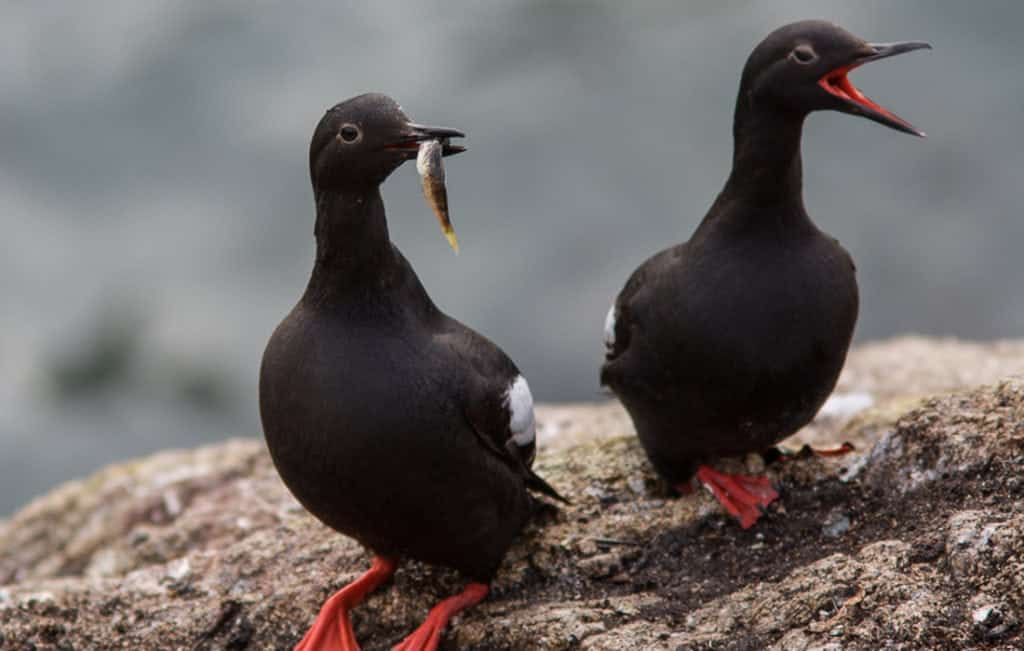
This plan would build off of the landmark protections you helped secure earlier this year for forage fish in federal waters, specifically protecting seven species and species groups of forage fish, including Pacific sand lance, Osmerid smelt species, silversides, pelagic squids, and others. Many of these fish are important prey for the more than 1 million seabirds that nest along Oregon’s coast. As a case in point, Pacific sand lance are a key prey species for the federally threatened Marbled Murrelet as well as other iconic seabirds like the Common Murre and Tufted Puffin.
This draft plan is a huge step forward in protecting forage fish and the seabirds that depend on them. To strengthen the plan, Bird Alliance of Oregon encourages ODFW to include a strategy to fill in data gaps and protect nearshore spawning grounds for relevant species covered in the plan.
How You Can Help
Take a few minutes and send a comment in support of forage fish conservation in Oregon or sign on to this pre-written letter. Below are some talking points to help you craft a brief comment:
- Thank ODFW for developing a plan that would extend forage fish protections recently adopted for federal waters (3-200 miles offshore) to Oregon’s marine waters, and ask them to finalize this plan.
- To further strengthen the plan, we encourage ODFW to include an explicit strategy to fill in data gaps and protect nearshore spawning grounds for relevant species covered in the plan.
- We are encouraged to see a plan that is ecosystem-based, taking into account the marine food web. By protecting forage fish species, the welfare of seabirds, marine mammals, and larger fish species (including commercially important fish like salmon) will be enhanced for future generations.
- We support the plan’s precautionary approach to management based on the principle that responsible management requires asking questions before a fishery begins, rather than after.
- We are encouraged to see new reporting and monitoring requirements that will enable ODFW to help track bycatch landings of forage fish more accurately.
How to Comment:
Click here to leave a comment: http://www.dfw.state.or.us/mrp/ffmp.asp
Submit your email, letter, or phone comment to:
Caren Braby, Manager
Marine Resources Program
Oregon Department of Fish and Wildlife
2040 SE Marine Science Drive
Newport, OR 97365
(541) 867-4741
Caren.e.braby@state.or.us
CC: odfw.comments@state.or.us.
Why Act Now?
Too often fisheries managers step in after fish stocks have already collapsed. This is a golden opportunity to set good policies before it is too late. Growing global demand for inexpensive protein drives the call to open new fisheries on forage fish, posing a threat to wildlife. By weight, forage fish now account for nearly 40 percent of all fish caught worldwide. Only ten percent of this catch is for human consumption – the other 90 percent goes to feed for livestock, pellets for farmed fish, and fertilizer.



